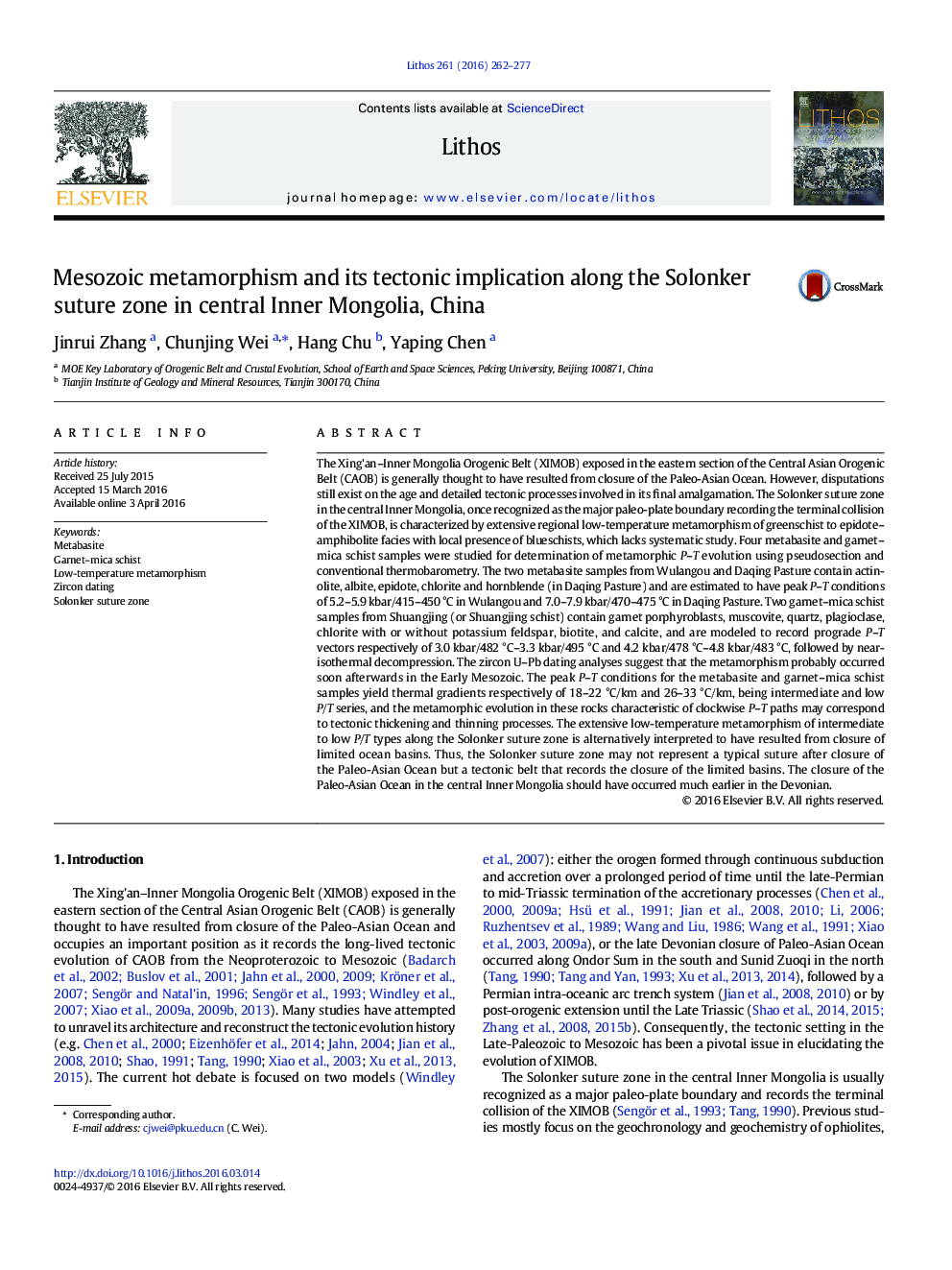| کد مقاله | کد نشریه | سال انتشار | مقاله انگلیسی | نسخه تمام متن |
|---|---|---|---|---|
| 4715559 | 1638643 | 2016 | 16 صفحه PDF | دانلود رایگان |
• The Solonker suture zone is characterized by extensive regional metamorphism.
• P–T estimates for the metamorphism yield intermediate and low P/T facies series.
• The metamorphism in the Solonker suture zone occurred in the Early Mesozoic.
• The extensive metamorphism is attributed to the closure of limited ocean basins.
The Xing'an–Inner Mongolia Orogenic Belt (XIMOB) exposed in the eastern section of the Central Asian Orogenic Belt (CAOB) is generally thought to have resulted from closure of the Paleo-Asian Ocean. However, disputations still exist on the age and detailed tectonic processes involved in its final amalgamation. The Solonker suture zone in the central Inner Mongolia, once recognized as the major paleo-plate boundary recording the terminal collision of the XIMOB, is characterized by extensive regional low-temperature metamorphism of greenschist to epidote–amphibolite facies with local presence of blueschists, which lacks systematic study. Four metabasite and garnet–mica schist samples were studied for determination of metamorphic P–T evolution using pseudosection and conventional thermobarometry. The two metabasite samples from Wulangou and Daqing Pasture contain actinolite, albite, epidote, chlorite and hornblende (in Daqing Pasture) and are estimated to have peak P–T conditions of 5.2–5.9 kbar/415–450 °C in Wulangou and 7.0–7.9 kbar/470–475 °C in Daqing Pasture. Two garnet–mica schist samples from Shuangjing (or Shuangjing schist) contain garnet porphyroblasts, muscovite, quartz, plagioclase, chlorite with or without potassium feldspar, biotite, and calcite, and are modeled to record prograde P–T vectors respectively of 3.0 kbar/482 °C–3.3 kbar/495 °C and 4.2 kbar/478 °C–4.8 kbar/483 °C, followed by near-isothermal decompression. The zircon U–Pb dating analyses suggest that the metamorphism probably occurred soon afterwards in the Early Mesozoic. The peak P–T conditions for the metabasite and garnet–mica schist samples yield thermal gradients respectively of 18–22 °C/km and 26–33 °C/km, being intermediate and low P/T series, and the metamorphic evolution in these rocks characteristic of clockwise P–T paths may correspond to tectonic thickening and thinning processes. The extensive low-temperature metamorphism of intermediate to low P/T types along the Solonker suture zone is alternatively interpreted to have resulted from closure of limited ocean basins. Thus, the Solonker suture zone may not represent a typical suture after closure of the Paleo-Asian Ocean but a tectonic belt that records the closure of the limited basins. The closure of the Paleo-Asian Ocean in the central Inner Mongolia should have occurred much earlier in the Devonian.
Journal: Lithos - Volume 261, 15 September 2016, Pages 262–277
